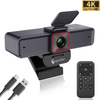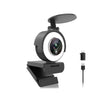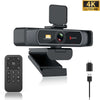
Ever sat through a chaotic meeting? Be it online or face-to-face, these moments can be a whirlwind of confusion. But there's hope in 2023: by embracing a few essential meeting manners, we can elevate our professional interactions.
In this piece, we'll explore the essence of meeting etiquette, delve into its significance in the business realm, and offer some top-notch strategies for impeccable meeting manners.
What's the Deal with Meeting Etiquette?
In a nutshell, meeting etiquette is the set of unwritten rules that govern our behavior during professional interactions. These norms borrow from social conventions and mold them to fit the corporate scene. While the specifics can sometimes be influenced by the meeting's nature or a company's ethos, there are general courtesies that universally apply. Mastering these nuances is more than just good manners; it's a way to showcase your respect for everyone's contributions and time.
Why Put Emphasis on Meeting Manners in Business?
Ever wondered why decorum is so stressed upon in the business milieu? That's because it's intricately linked with the fabric of an organization's culture and its public perception. Plus, it's a cornerstone for ensuring the smooth and productive unfolding of meetings. Simply put, how attendees comport themselves can significantly influence the overall efficacy of the discussion. Hence, keeping the etiquettes in check is like ensuring the gears of a machine mesh seamlessly.
Crafting a Positive Ambience and Strengthening Connections
Welcoming clients with genuine warmth and focus instantly sets the tone for a collaborative dialogue. When they sense your genuine interest, discussions become more open, allowing for a smoother negotiation process. It's these initial steps that pave the way for building trust and finding areas where both parties can benefit.
Carving a Stellar Impression and Sealing the Deal
When you're in a business meeting, your personal brand is, in many ways, a reflection of your organization. Presenting yourself impeccably does more than just turning heads. It's about creating an indelible mark, making the other side more receptive to discussions, and often, it's the key to wrapping up successful negotiations.
Broadening Horizons and Nurturing Bonds
Adhering to proper etiquette not only streamlines communication but also opens doors to deeper understanding. This mutual respect often translates into strong partnerships that go beyond just one meeting. Through consistent interaction and teamwork, casual business acquaintances can evolve into trusted allies.
In essence, impeccable business manners are more than just a rule book to follow. They're the foundation upon which strong professional relationships are built. When you show respect and value to others, you're not just upping your own game – you're elevating the entire team and company's standing in the process.
Professional Meeting Etiquette: Getting it Right Beforehand
1. Timing is Everything
When lining up a meeting, always keep an eye on everyone's availability. Whether it's a face-to-face meet-up or a virtual chat, selecting a time that works for most, if not all, is vital. For those online meet-ups, don't forget about colleagues in other time zones. It's always a great move to touch base with everyone first to pinpoint a slot that's a good fit. Remember, while finding the perfect time may require a bit of back and forth, the aim is to keep the majority content.
2. Chart Out the Meeting's Course Ahead of Time
Lay out the meeting blueprint: Be crystal clear about what the meeting aims to achieve and break it down into manageable chunks. Sketch out an outline with concise titles and descriptions for each point.
Time each segment right: Rank each point based on its weightage and assign time slots accordingly. This ensures discussions remain focused and decisions are made efficiently, without dragging the meeting unnecessarily.
Go for a ready-made meeting format: Depending on the meeting's vibe and goals, opt for an agenda template that fits the bill. These pre-made formats not only offer a structured approach but also act as a checklist ensuring no crucial point gets overlooked. Feel free to stick to a tried-and-true template or give it your own twist.
Delegate and gear up: Dispatch the agenda to all participants ahead of the big day, highlighting their roles and the groundwork needed from their end. Clue them in on any essential reads, stats, or materials that'll steer the conversation.
Getting these elements right ensures that everyone walks into the meeting room (virtual or otherwise) clued in and raring to go. When the groundwork is laid out meticulously, you can bet the meeting will run like a well-oiled machine, with every attendee actively chiming in.
3. Size Up the Meeting and Gear Up with Tech
Gauging the scope of your meeting is paramount. Pick a spot that comfortably houses all attendees without feeling cramped or echoing with emptiness. Don't skimp on the tech front, especially if you've got remote team members chiming in. Make sure the space boasts all the techie trimmings – think top-tier audiovisual tools. And here's a pro tip: always run a quick tech check pre-meeting to avoid those awkward "Can you hear me now?" moments. Having all systems go ensures that your meeting sails smoothly without any tech hiccups.
4. Suit Up to Show Up
Your attire speaks volumes before you even utter a word. Always dress the part. Ensure your chosen outfit aligns with the meeting's tone and the company's overall vibe. Whether it's business formal or smart casual, your ensemble should echo professionalism. Remember, first impressions last, and your attire can set the tone for the entire meeting.
During the Meeting
1. Tick-tock, Respect the Clock
Being timely is more than just good manners; it's a hallmark of professionalism. If you're steering the ship, aim to be there a bit earlier. Stick to the timelines set for each point on your agenda. This helps keep the discussion focused and efficient. And if any topic needs decisive input, give a heads-up to participants to come ready. Your aim? A meeting that's as productive as it's punctual.
2. Play Your Part
It's crucial to designate two key roles: the captain and the scribe. The captain (or leader) ensures the meeting stays on course, navigating through the agenda. The scribe, on the other hand, keeps a record, jotting down the main takeaways and action items. For an added touch of organization, a structured minutes template can be a game-changer. By having these roles in place, you're setting the stage for a well-orchestrated meeting.

3. Project and Pronounce
When you speak up in a meeting, make sure your voice carries. Articulating your words loudly and clearly ensures everyone catches your drift, keeps them engaged, and stamps your authority in the discussion. This becomes even more vital in expansive spaces or when participants are tuning in remotely, ensuring your message doesn't get lost in translation.
4. Roll Out the Introductions
Taking a moment to introduce yourself, and others, sets the right tone. It's not just about names; it's about bridging connections, streamlining interactions, and spurring active involvement. With a brief intro, everyone gets a feel for each other's expertise and role, which can ignite richer conversations. Plus, it fosters a sense of trust, setting the stage for a fruitful meeting.
5. Tune in Wholeheartedly
There's more to listening than just being silent. Active listening is about fully immersing yourself in what's being shared. It's about asking pertinent questions, seeking clarifications, and genuinely being in the moment. Your body language, like nodding or maintaining eye contact, can show you're truly plugged in. Encouraging responses and asking thought-provoking questions can further elevate the conversation's depth and quality.
6. Share Thoughts with Tact
When you weigh in, do it with grace. Voice your opinions with a blend of assertiveness and respect. Opt for a balanced tone, staying clear of any aggressive or domineering undertones. Let others have their slice of the conversational pie, allowing them room to share, and always respect their speaking turns. Remember, it's not just what you say, but how you say it that counts.
7. Time Your Queries Just Right
Interjecting with questions is a brilliant way to stay engaged and steer the conversation. But remember, it's all about timing. Ensure you're truly grasping the crux of what's being shared before you jump in. Avoid cutting someone off mid-sentence or dropping a question when it's out of context. A well-timed, clear query can elevate the discussion, offering fresh angles and insights.
8. Mind Your Silent Signals
Even when you're not speaking, you're communicating. Nonverbal cues can speak volumes. Dodge these potential pitfalls:
- Fidgeting, swiveling in your seat, or an incessant rocking motion.
- Busywork like shuffling papers or randomly browsing your computer.
- Nervous habits like leg bouncing, incessant pen-clicking, or other distracting sounds.
9. Sidestep the Snacks and Sips
Keeping munchies and beverages off the table during meetings ensures everyone's laser-focused. Sounds of munching or sipping can divert attention and disrupt the meeting's flow. Moreover, it can be perceived as casual or indifferent, not aligning with a professional setting.
10. Pencil in Pause Periods
Never underestimate the power of a well-timed break, especially during lengthy discussions. Slotting in short recesses, ranging from 5 to 15 minutes, gives attendees a chance to stretch and refresh. If you're feeling adventurous, throw in a light activity or two—maybe some team exercises or group chats—to keep the energy levels up and foster camaraderie.
11. Hit the Mute Button When Not Speaking
Silencing your mic when you're not actively contributing is a small action with big impact. In the realm of virtual meetings, it's a courtesy that cuts down on potential distractions and background rumbles. This is especially vital in large group calls or when there's a chance of echoing. So, when you're not in the spotlight, make it a habit to keep things on mute for crystal-clear communication.
Post-Meeting Best Practices
1. Extend Your Gratitude
At the meeting's wrap, take a moment to express your appreciation to everyone in the room. A simple thank you can go a long way in recognizing their input, dedication, and time. Such gestures foster a positive atmosphere and lay the groundwork for future collaborations.
2. Reflect and Follow Through
Post-meeting, it's essential to assess how things went. This reflection helps pinpoint areas that can be fine-tuned, ensuring subsequent meetings are even more impactful. But don't stop there. Make sure to circle back on any action items or deliverables discussed. A structured follow-up email, perhaps leveraging a template, can aid in monitoring progress and ensuring everyone is on the same page.
Assessing the Meeting:
- Revisit the Blueprint: Take a fresh look at the agenda and goals. Were the intended results achieved?
- Scrutinize the Structure: Evaluate the meeting's flow and structure. Were processes streamlined and effective?
- Solicit Feedback: Touch base with attendees to glean insights on what worked and what didn't.
- Distill the Takeaways: Sum up the key achievements and areas needing a tweak, then chart out steps to elevate future sessions.
Nailing the Follow-Up:
- Task Allocation: Clearly define who's handling what, ensuring there's no ambiguity.
- Timeframe and Specs: Pin down clear deadlines and outline specific criteria for each task.
- Stay in the Loop: Regular check-ins help keep everyone on track and offer a platform for assistance if needed.
- Quality Check: Before signing off on tasks, assess the quality and depth of the output.
- Prep for the Sequel: Ensure everything's wrapped up and ready to be discussed or reviewed in the subsequent meeting.
By meticulously assessing and ensuring diligent follow-up, potential pitfalls are swiftly identified and addressed, ensuring that every meeting is a step forward in productivity and collaboration.
Parting Words of Wisdom
Mastering the art of impeccable meeting manners isn't just about following a set of rules. It's a reflection of one's leadership flair and ability to collaborate effectively. Embracing such etiquette can open doors to personal growth and propel your career trajectory. Remember, at the heart of any meeting or business interaction, it's genuine professionalism and mutual respect that truly make the difference. Stay true to these principles, and you're bound to make a lasting impression.








 Angetube 913
Angetube 913
 Angetube 866MAX
Angetube 866MAX
 Angetube 914pro
Angetube 914pro
 PTZ 4K 871Ai
PTZ 4K 871Ai
 Angetube 863plus
Angetube 863plus
 Angetube @60FPS 873Ai
Angetube @60FPS 873Ai
 Angetube 967Pro
Angetube 967Pro
 Angetube 967
Angetube 967
 Angetube 862pro
Angetube 862pro
 Angetube 920
Angetube 920
 Angetube 963
Angetube 963
 Angetube 962
Angetube 962
 Angetube 827
Angetube 827
 Angetube 628
Angetube 628
 Smart Notebook
Smart Notebook
 862Pro
862Pro
 863PLUS
863PLUS


